Turnip (Snowball)
Great autumn crop which are high in vitamins and low in calories
Growing turnips is similar to growing beetroot, radish and swedes… which means it’s straight forward, cheap and doesn’t require much maintenance. The green tops are also high in vitamins and very low in calories.
You can grow alongside “Milan Purple Top” to overlap and extend your turnip havesting season.
This is a week by week diary of the growing, maintenance and harvesting of snowball turnips.
Quick tips
- Sow 3-5 seeds into each module of a seedling tray
- Grows well at the end of the year
- Seeds can be sown from May → July directly outdoors
- Prefers full sun
- Can be multi sown
Dates
To grow turnips through the Summer for an Autumn harvest, use the following dates:
| Jan | Feb | Mar | Apr | May | Jun | Jul | Aug | Sep | Oct | Nov | Dec | |
|---|---|---|---|---|---|---|---|---|---|---|---|---|
| Sow indoors & outdoors | O | O | O | |||||||||
| Harvest | H | H | H | H |
Pests
Turnip (snowball) are susceptible to the following pests:
Types of turnip
I grew growing “Snowball” turnip this year which we received for free with our subscription to Grow You Own magazine, which is worth the price for the free seeds alone. The seeds can also be found here from Thompson & Morgan.
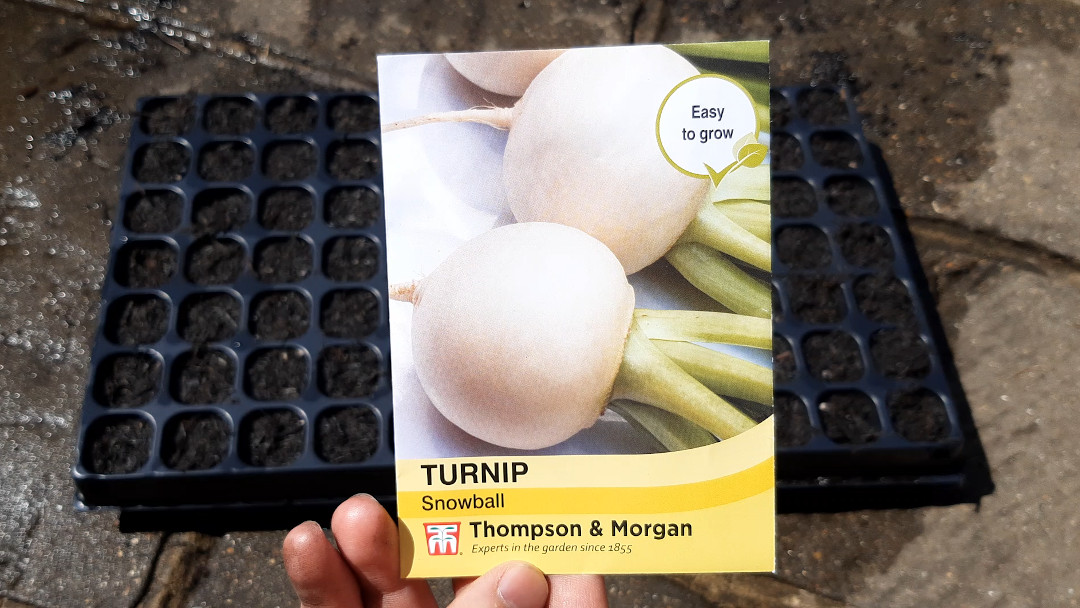
Watch it
I have compiled this growing diary into a short video for you:
Growing diary
I started this diary, and sowed these seeds, on the first week of May (22nd week of the year).
Week 1: Sowing
Sowing turnip seeds is similar to many other root vegetables. Start by filling your chosen seed tray (I used the 84 cell tray as I sowed other veg at the same time) with a soil and compost mix. You can find my recommended sowing soil here.
You don’t need to press the soil too firmly into each cell, the seedlings will have an easier time pushing down their roots if it’s a little fluffy. Make sure each module is full and there aren’t any air pockets.
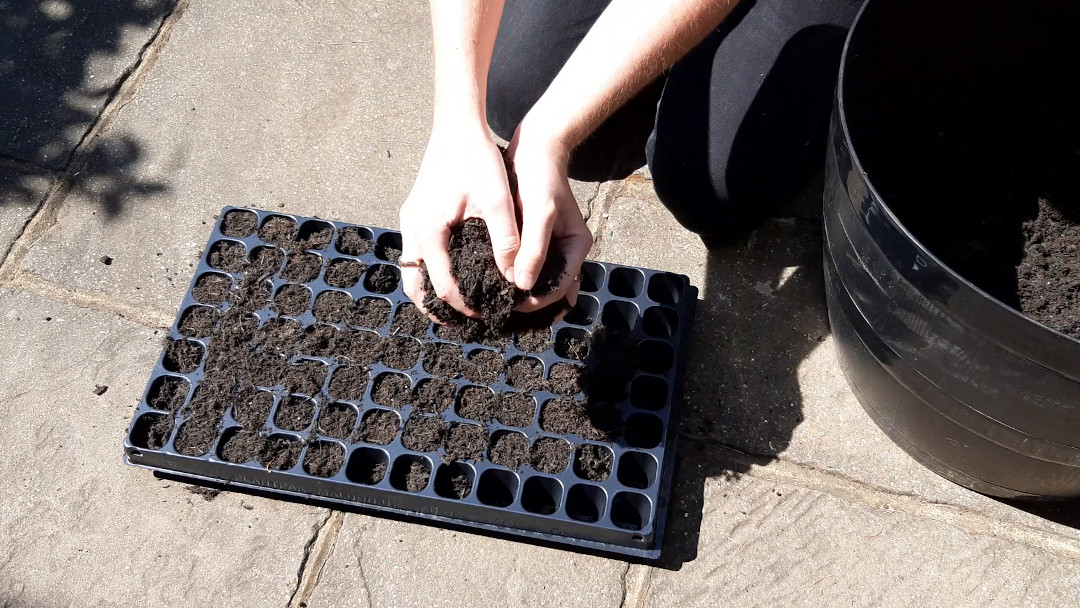
Next, water thoroughly or sit the tray in water to allow the compost to soak up as much water as possible. This’ll ensure the seedlings have a good drink to get them going and will mean the compost wont dry out too quickly.
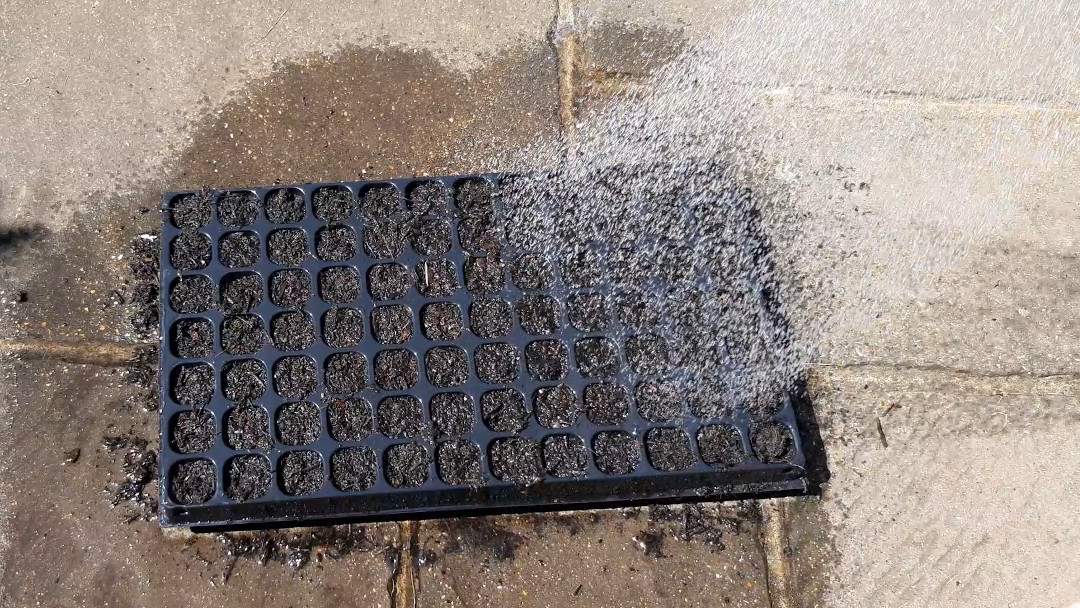
We’re going to be multi-sowing these turnips, so we won’t be thinning out the seedlings. Instead, we’ll thin them later by harvesting the largest root to leave the rest to continue growing. It allows us to grow more in a smaller space. Sow 3-5 seeds per cell.
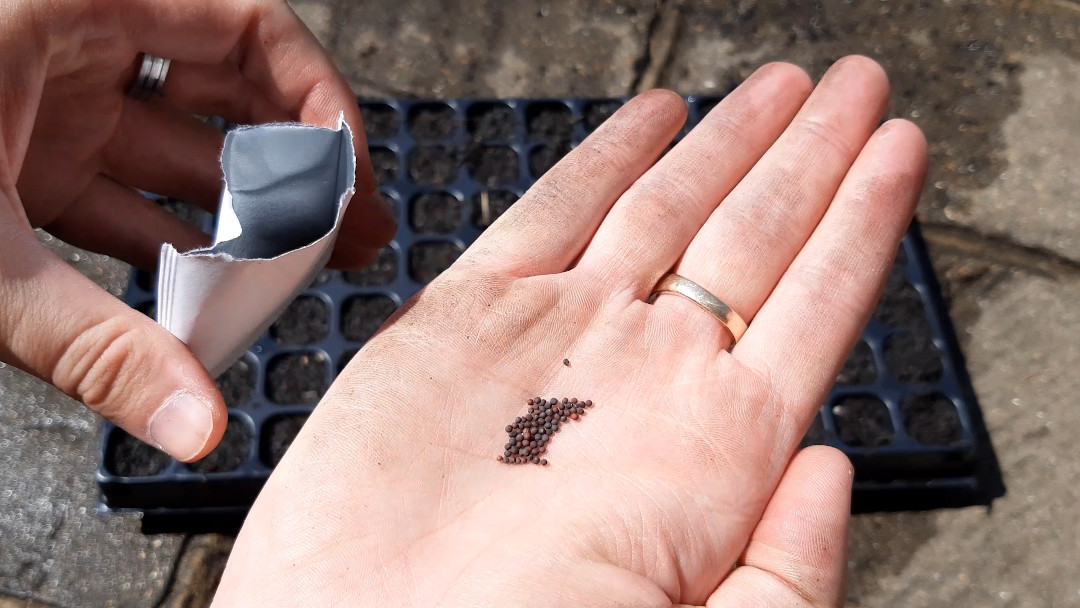
Sprinkle a little compost over the seeds, patting down gently and making sure the seeds are covered.

Lastly, give them a splash of water.
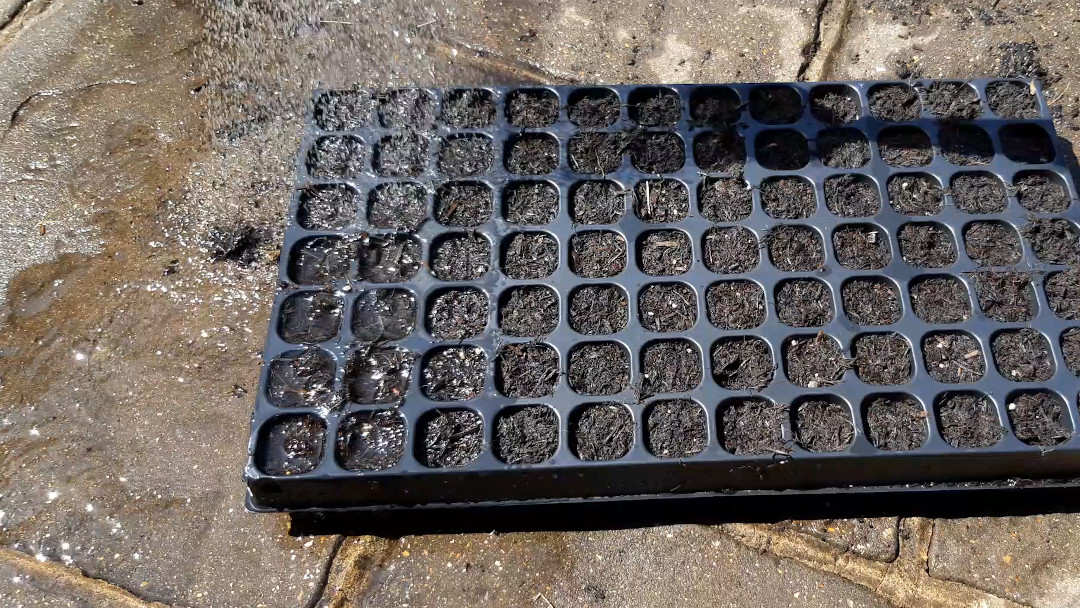
Put your label in place so you remember what you have planted.

Tip: Instead of writing a label for each column of your seed tray, write two and put them in the outermost columns that you used. If you always do this, you know that everything between the labels is the same.
If you’re getting your seedlings going indoors, put this on a sunny windowsill. If, like me, you’re growing in a grow tent (which I would recommend) then this tray can go near the bottom as the seedlings don’t need light yet.
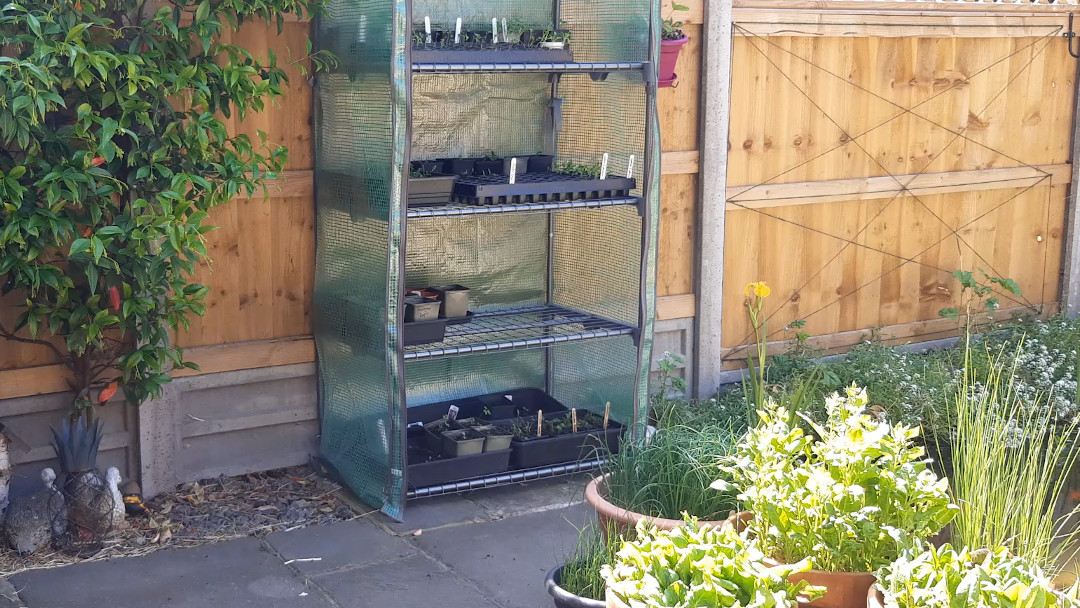
Week 2: Germination
Turnips germinate quickly, so you should already see some seedlings poking out the compost. Now that they have popped out of the soil, this tray should be raised higher in the grow tent to ensure the seedlings get enough light and don’t become leggy.
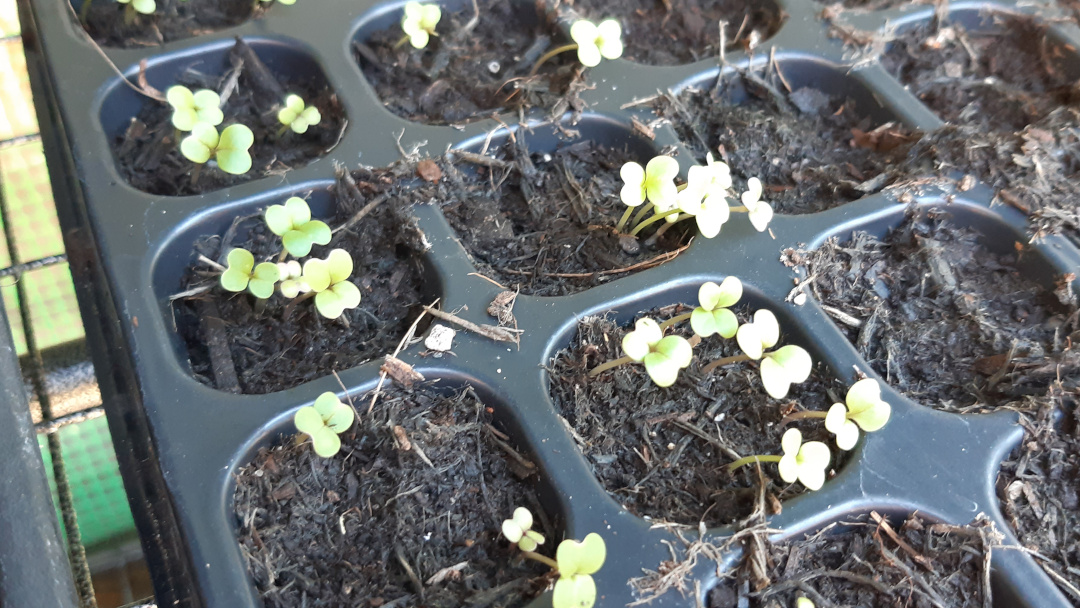
Keep them well watered to stop the soil drying out.
Week 3 → 5: Growing well
Be careful not to let the seedlings get too hot. If growing in a grow tent, open the door during the hottest part of the day. If on a windowsill, open a window to allow some airflow.
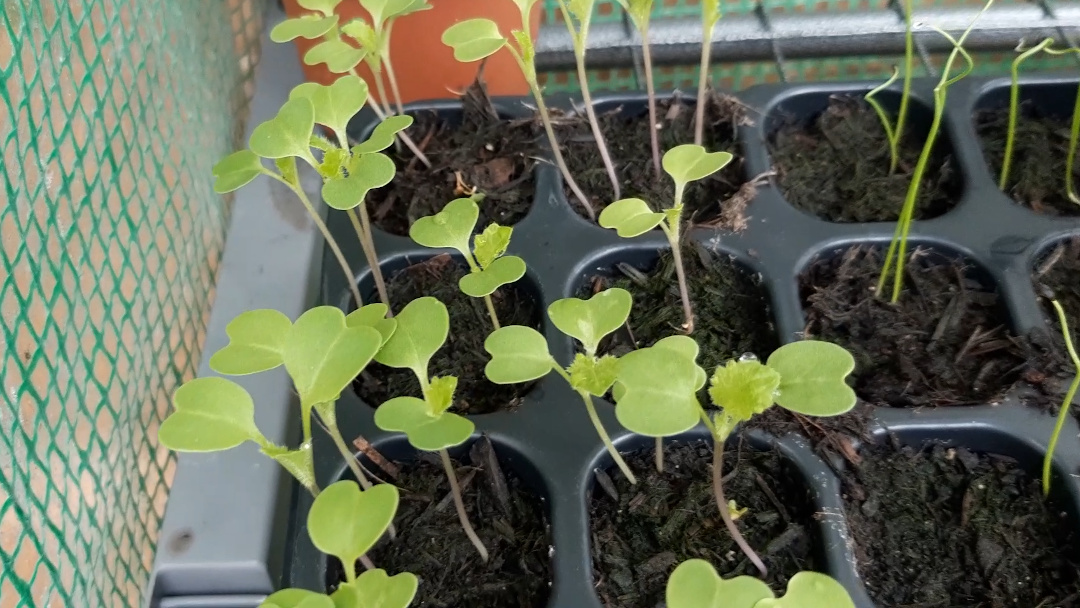
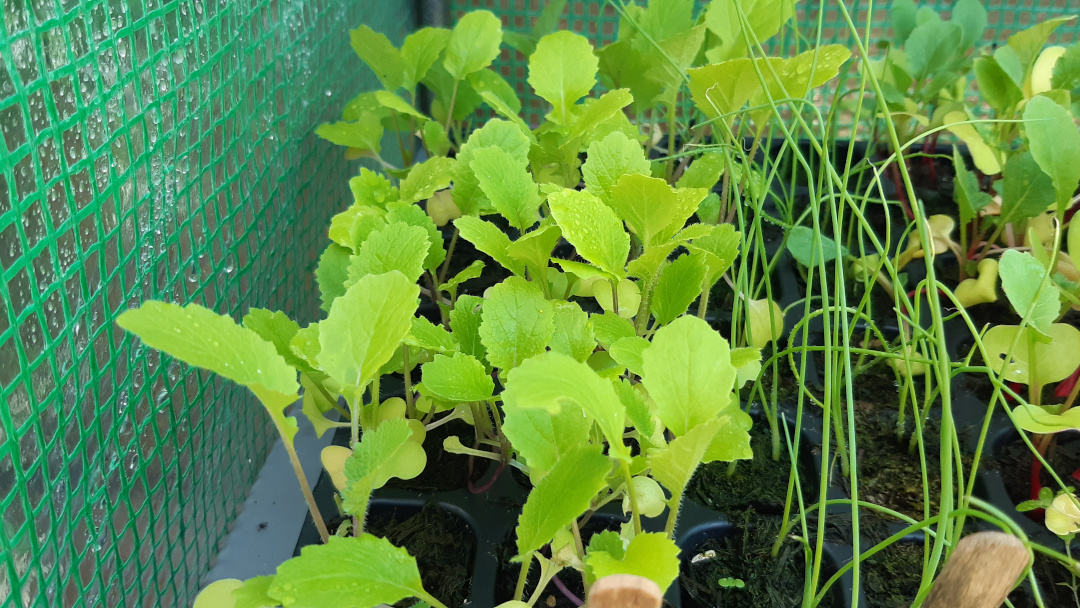
There’s not much to do now but wait a few more days until they are large enough to be transplanted outside.
Week 6: Ready to transplant
By week 6, your seedlings should be looking really healthy and are developing lots of leaves. They’re now ready to be transplanted.

Turnips will be happy in small pots, large pots, window boxes or straight in the ground. I grew mine in the ground this year. I cleared a space in the wood chip and it’s good to go.
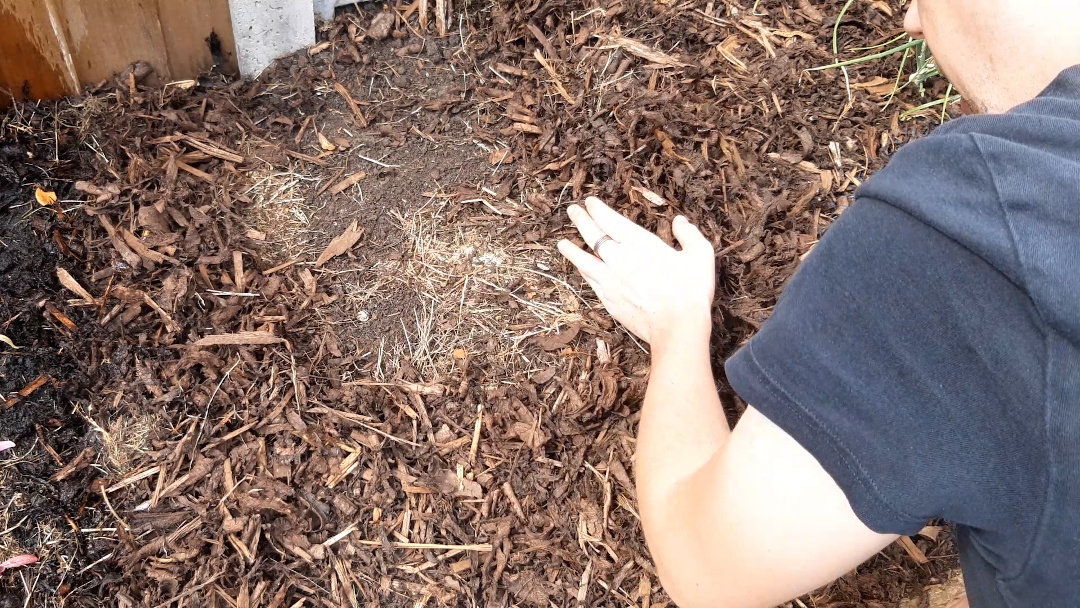
Give the ground a quick water so that making the holes is a little easier.
Make the holes
Using a dibber (make your own if you don’t have one, it makes transplanting much easier), make a two inch deep hole for each cell.
If you have a dibber, the lines on it are spaced an inch apart for reference
As we are multi-sowing our turnips, we can afford a little space between the seedlings. Aim for around an inch or two gap.

Ease pods from cell
Using the flat end of a pencil, poke out the pod from the cell using the hole in the bottom. If this is a little tricky, water the soil first so it holds together.
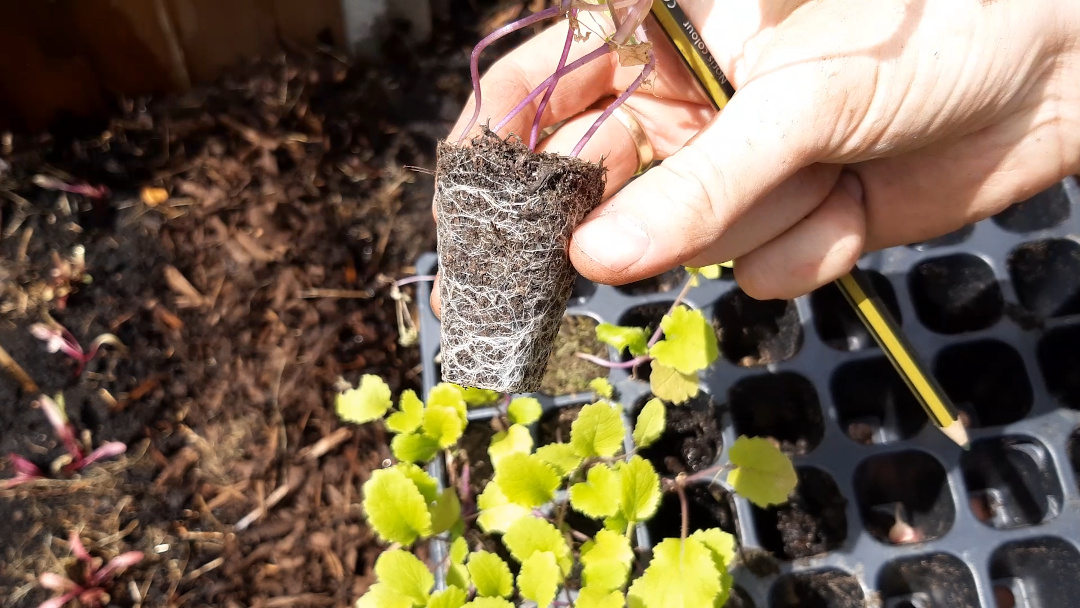
Transplant
Place each pod into each hole and press down so the top of the cell is flush with the top of the soil. Place your fingers either side of the stem and gently push down.
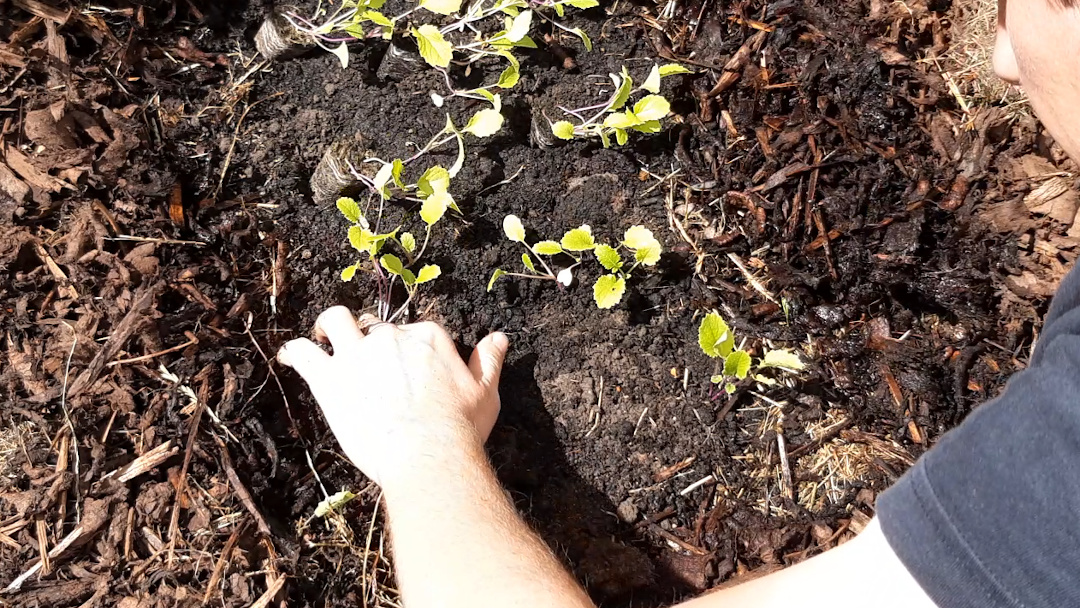
Water
Lastly, give them a good water. Transplanted seedlings can get shocked by being moved and their roots disturbed. We limit this by using a similar soil in both the tray and the pot and by watering the roots in well after moving them.

Week 7 → 10: Growing on nicely
The turnips should be growing on well and settling into their new home. Transplanting usually shocks the plant into concentrating on growing roots rather than foliage, so don’t be too surprised if the growth seems to pause for a week.
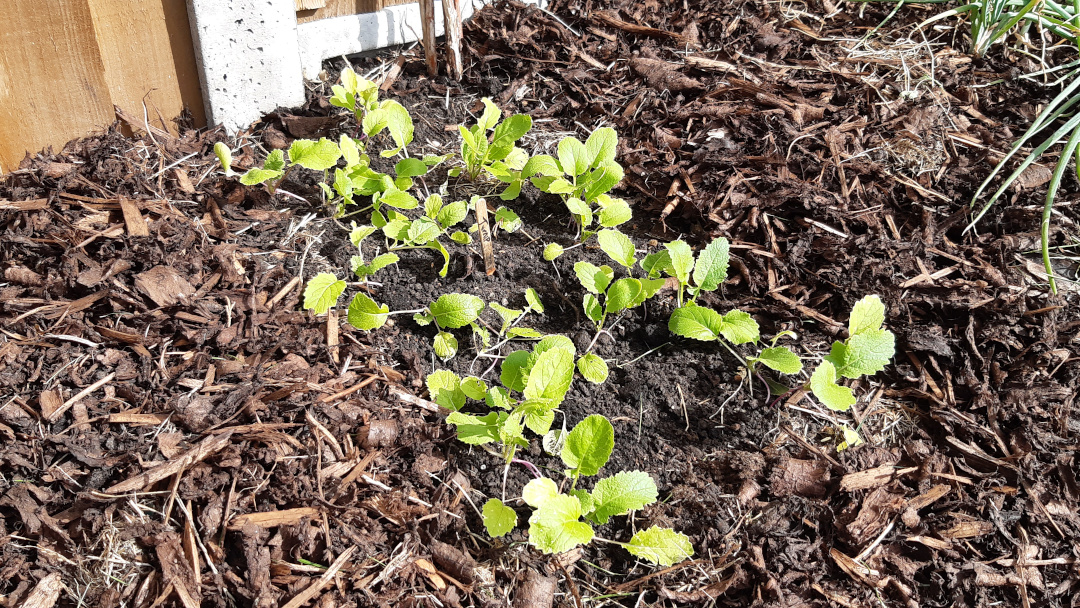
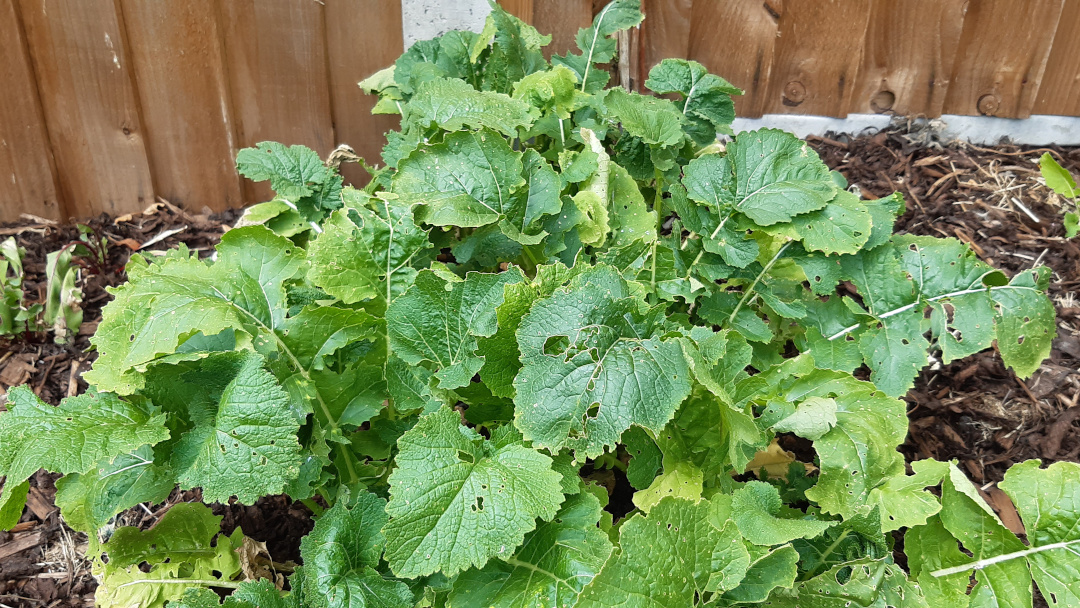
Through the next few weeks, your turnips will double in size and eventually fill the space you have planted them in. This is great because it protects the soil from drying out too quickly. You can also add a mulch around the roots to have the same effect.
Checking at the start of week 10 and the roots are just about to start growing. Start giving the plant liquid feed once a week (we call it ‘Feeding Fridays’ in our house) which will give the plant enough nutrients to support the growth.
Harvesting
The roots are ready when you can see healthy sized roots poking out of the ground.
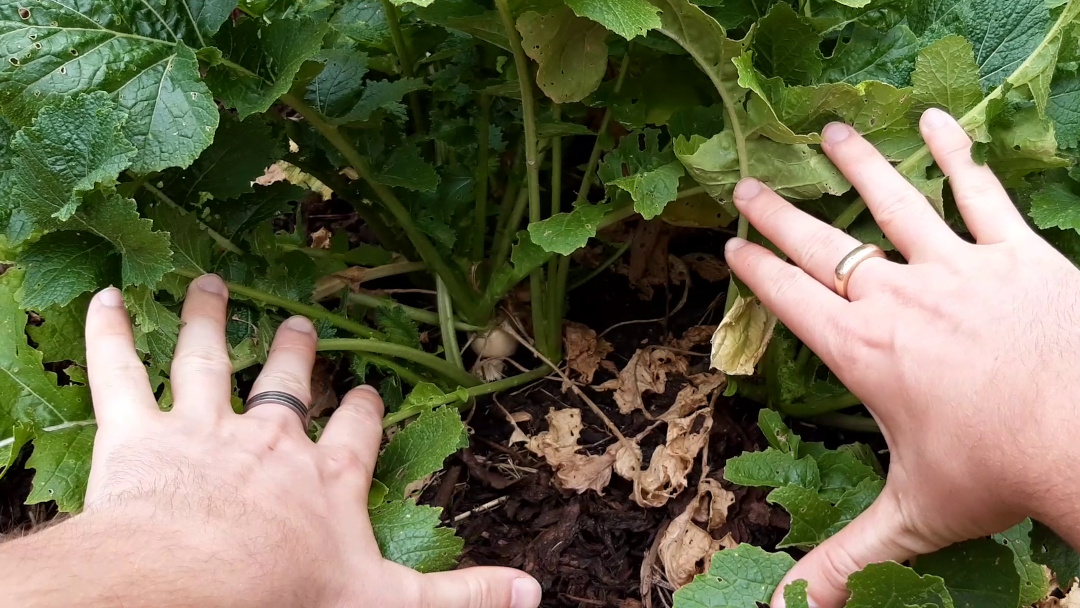
Harvesting is straight forward, but with multi-sown roots, you need to be careful not to damage the other plants in the clump.
You only need to harvest what you wish to cook and eat and the rest should stay in the ground to continue to grow.
Look at each of the clusters and harvest from those which have a large root showing.
Take the largest root and twist it out of the cluster. Don’t pull it out or it’ll damage the other plants.
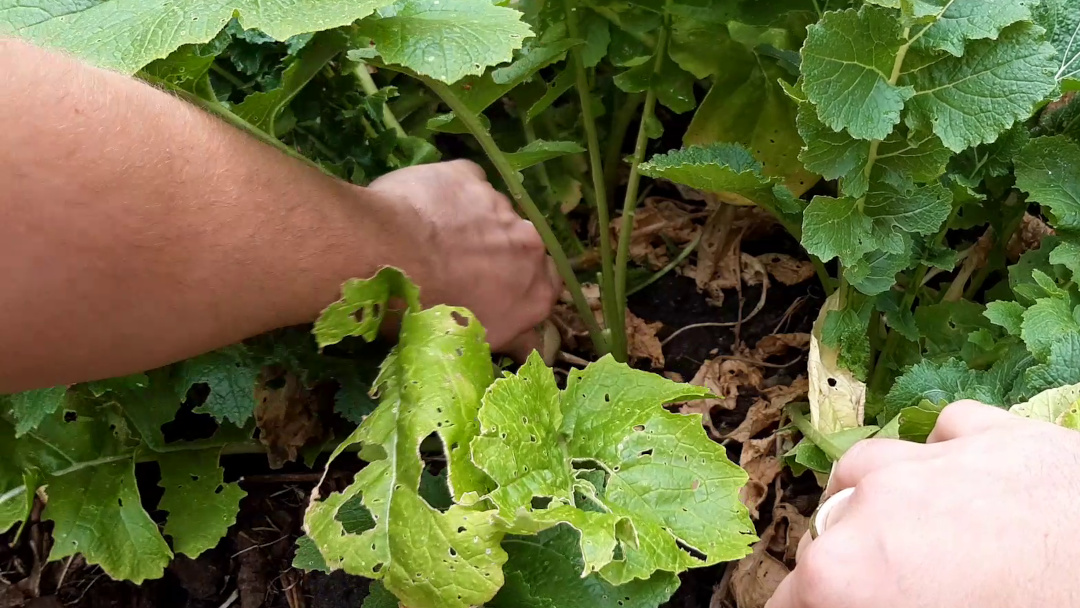
The rest now have more space to grow.
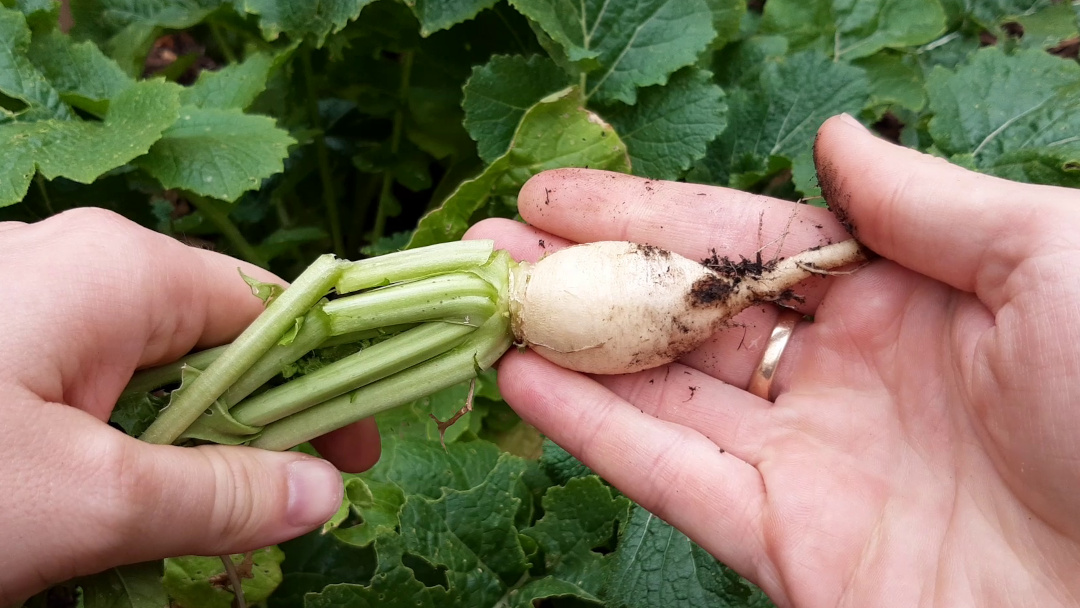
Chop off the greenery and use it in whichever meal makes you the happiest.
Over the next few weeks, harvest your turnips when you need them and, once freeing up some space, they can grow quite large:

Article written on May 28, 2020
Updated Aug 14, 2020
